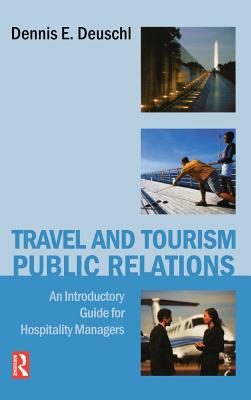The opening chapter explains the recent growth of industry PR, and travel & tourism news coverage which today focuses on the considerable economic benefits of the industry. Additionally, it reviews the leading news media that covers the industry, the primary PR tools and audiences, and details the factors leading to PR''s new prominence across the industry. It also provides informative sidebars with lists of key industry print media, top travel agencies, plus a Travel Industry Association of America case study of a post-9/11/2001 campaign to restore American confidence in travelling. It also includes a composite definition of PR, and tells how PR is a discipline distinctively different from publicity, propaganda, advertising, and marketing. The author notes how, over the past decade due to economic conditions, PR in many cases has been integrated with marketing communications and played an important role in both strategic and tactical marketing activities.
Following this overview, the ensuing five chapters examine communications model specifics that are of special importance to the industry''s major sectors: hotels/lodging establishments; restaurants; tourist attractions/destinations; and transportation services. Each of these sectors have their own
special messages, PR tools, and audiences. For example, meeting planners and travel agents are of most importance to hotels, while travel agents are of little importance to airlines and restaurants. Also included is a chapter about what travel employers should understand about PR
The chapters will be followed by appendices that will include:
The top 30 U.S. Travel & Tourism Professional/Trade Associations; and the Leading U.S. Travel & Tourism Universities.
The opening chapter explains the recent growth of industry PR, and travel & tourism news coverage which today focuses on the considerable economic benefits of the industry. Additionally, it reviews the leading news media that covers the industry, the primary PR tools and audiences, and details the factors leading to PR''s new prominence across the industry. It also provides informative sidebars with lists of key industry print media, top travel agencies, plus a Travel Industry Association of America case study of a post-9/11/2001 campaign to restore American confidence in travelling. It also includes a composite definition of PR, and tells how PR is a discipline distinctively different from publicity, propaganda, advertising, and marketing. The author notes how, over the past decade due to economic conditions, PR in many cases has been integrated with marketing communications and played an important role in both strategic and tactical marketing activities.
Following this overview, the ensuing five chapters examine communications model specifics that are of special importance to the industry''s major sectors: hotels/lodging establishments; restaurants; tourist attractions/destinations; and transportation services. Each of these sectors have their own
special messages, PR tools, and audiences. For example, meeting planners and travel agents are of most importance to hotels, while travel agents are of little importance to airlines and restaurants. Also included is a chapter about what travel employers should understand about PR
The chapters will be followed by appendices that will include:
The top 30 U.S. Travel & Tourism Professional/Trade Associations; and the Leading U.S. Travel & Tourism Universities.
Get Travel and Tourism Public Relations by at the best price and quality guranteed only at Werezi Africa largest book ecommerce store. The book was published by Taylor & Francis Ltd and it has pages. Enjoy Shopping Best Offers & Deals on books Online from Werezi - Receive at your doorstep - Fast Delivery - Secure mode of Payment
 Jacket, Women
Jacket, Women
 Woolend Jacket
Woolend Jacket
 Western denim
Western denim
 Mini Dresss
Mini Dresss
 Jacket, Women
Jacket, Women
 Woolend Jacket
Woolend Jacket
 Western denim
Western denim
 Mini Dresss
Mini Dresss
 Jacket, Women
Jacket, Women
 Woolend Jacket
Woolend Jacket
 Western denim
Western denim
 Mini Dresss
Mini Dresss
 Jacket, Women
Jacket, Women
 Woolend Jacket
Woolend Jacket
 Western denim
Western denim
 Mini Dresss
Mini Dresss
 Jacket, Women
Jacket, Women
 Woolend Jacket
Woolend Jacket
 Western denim
Western denim
 Mini Dresss
Mini Dresss






























































